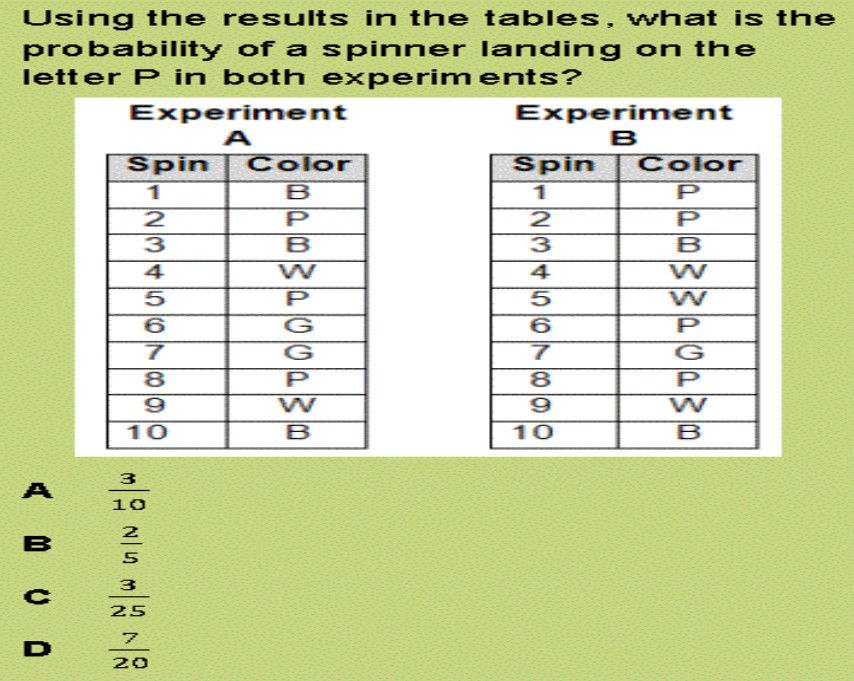What are the possible outcomes (sample space) of the spinner? Click to see the spinner
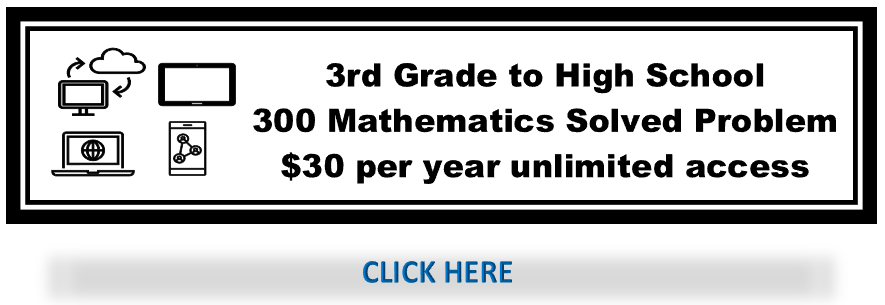
advertisement

INVBAT.COM – A.I. + VOICE – AUGMENTED INTELLIGENCE SERVICE PROVIDER
NEVER FORGET NOW POSSIBLE IF YOU HAVE A PERSONAL A.I. MEMORY ASSISTANT
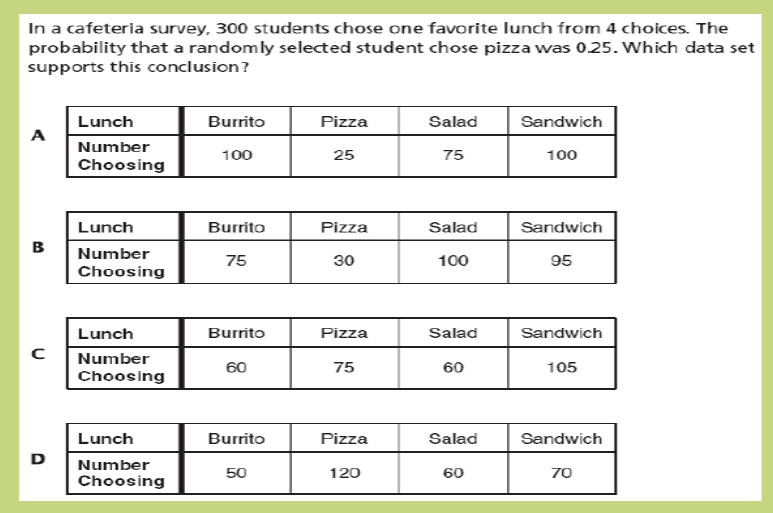
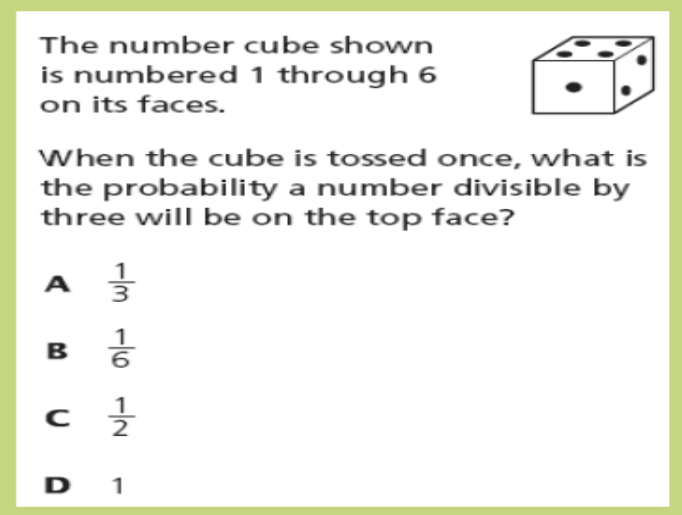
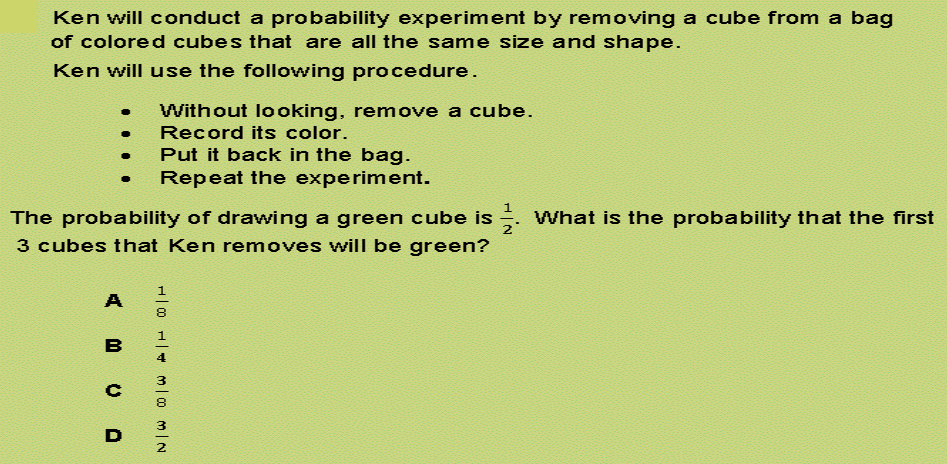
Ken will conduct a probability experiment by removing a cube from a bag of colored cubes that are all the same size and shape. Ken will use the following procedure.
Without looking, remove a cube
Record its color
Put it back in the bag.
Repeat the experiment.
The probability of drawing a green cube is 1/2. What is the probability that the first 3 cubes that Ken removes will be green?

advertisement
